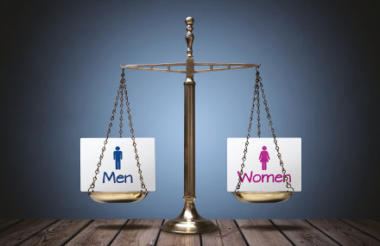Charities have a gender pay gap of less than 2 per cent once bodies such as independent schools and housing associations are stripped out, an analysis has found.
The figures suggest the sector is performing far better against equality metrics than previous estimates had suggested, and better than almost any part of the private sector.
Yesterday an analysis by David Kane, a freelance data scientist, revealed that 568 registered charities with more than 250 employees had reported on differences in median pay between men and women, and that among those bodies, the average median pay gap was 8 per cent.
Kane has now undertaken an analysis of the figures against the criteria used for NCVO's UK Civil Society Almanac, where he has has identified that the original figure included almost 200 organisations not classified as part of the voluntary sector by the annual analysis of charity accounts.
When building the almanac, NCVO strips out a number of different classes of registered charity, such as schools, housing associations, universities and public bodies – to give an overview of what it terms “general charities” – those likely to be considered part of the voluntary sector.
Kane, who led work on the almanac for many years, found that 374 qualifying employers, employing around 400,000 people, met the “general charity” definition.
These charities had an average mean pay gap of 5.6 per cent, and median pay gap of 1.9 per cent.
Median pay gap is the preferred figure for calculating differentials, to avoid distortion from a small number of very senior earners. The difference between the two figures suggests that men are slightly overrepresented in high-paying executive positions in charities.
Kane found the data included more than 100 independent schools, which have a 20.6 pay gap in favour of men, as well as 38 housing associations, with a gap of 4.1 per cent, and 24 universities, with a gap of 15.6 per cent. Another 25 charities had various other exclusions.
“This means that voluntary sector organisations have a better pay gap than almost any other sector we’ve seen,” Kane said. “It’s very encouraging.
“There’s obviously still a difference, and the analysis suggests a bigger difference in the highest-paid jobs. But this shows the voluntary sector is more progressive than others, and much more progressive than we realised at first.”
|
|
Related articles











